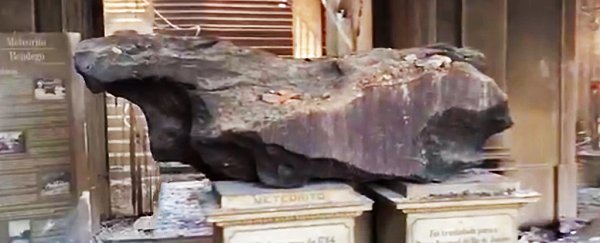It's an irreversible tragedy that has been felt the world over. On Sunday, a huge and devastating fire ripped through Brazil's National Museum (Museu Nacional).
And just like that, in a matter of moments, two hundred years of work, research and knowledge was wiped from the collective history of humanity.
The museum, which was founded in 1818 - the oldest scientific institution in Brazil - was home to more than 20 million precious specimens.
The audio recordings of indigenous languages no longer spoken; the ancient Andean artefacts; frescoes from Pompeii; troves of fossils; millions of butterflies and other arthropods.
The total destruction is still being tallied, but officials have said that anything held in the main building likely went up in flames - an estimated 90 percent of the whole collection, roughly twice as many specimens as are housed in the entire British Museum.
Yet amongst the ruin and calamity, a few lone survivors have risen from the ashes.
Paulo Buckup, a professor of zoology at the museum rushed into the blaze on Sunday night, grabbing as many mollusks and marine specimens as he and a few others could gather before the rescue attempt became too dangerous.
Even after all their efforts, they were only able to save a "minuscule portion of the heritage that was lost".
The pictures you don’t see in the official media but see in FB. Brazilian scientists and students salvaging data, specimens, equipment. A mix of desperation, vision, and hope for what’s to come. Estamos juntos. pic.twitter.com/QP3cG3vS2b
— Ana Carnaval (@ana_bosslady) September 3, 2018
Working in the smouldering remains of the building this week, firefighters on the scene have reportedly recovered "fragments of bones", although no one can yet be sure whether this includes a precious 12,000-year-old skull named Luzia, one of the oldest fossils ever found in the Americas.
"We still have to collect them and take them to the lab to know exactly what they are," Cristiana Serejo, the museum's vice director, told AP.
But despite the surge of hope after the announcement, the artist Maurilio Oliveira told The New York Times that the only thing that could have saved the fragile skull was "if a piece of wood or something fell and protected it".
Some porcelain and paintings have also been recovered from the ruins.
Ignoring the main building, which remains off-limits for safety reasons, scientists have turned their attention to the remaining 10 percent: the museum's herbarium, its main library and some of its vertebrates and invertebrates, which were all housed in a separate building, mostly untouched by the flames.
While there are reports of burnt pages flying around the streets nearby, the massive scientific library, which contained nearly half a million volumes, including 2,400 rare works, was apparently not among the casualties. They were protected from the flames in the annexed building.
The museum's 7,000-some vertebrate collection may not be so lucky. Since the fire, the annexed building has been without electricity for days, and this does not bode well for the fragile specimens.
"We have animals that need to be frozen, and they were rotting without electricity," said Marcelo Wexler, a researcher in the vertebrate department.
Their spineless counterparts were easier to save. According to a Twitter update, Debora Pires, a professor working at Museu Nacional, has said that 80 percent of the invertebrate holotypes, also stored in the separate building, are safe.
Amongst the main building's destruction is one obvious survivor.
The monstrous Bendegó meteorite, the largest meteorite ever found on Brazilian soil, is one of the only artefacts that was left nearly intact by the fire. It sits on a pedestal in the main building amongst the ash and wreckage, in the exact same place it has been in since 1888.
#MuseuNacional: O meteorito Bendegó, o maior do Brasil, é um dos principais atrativos do acervo do Museu. Pelas imagens, é possível observar que ele resistiu ao incêndio. #BandNewsFM pic.twitter.com/TMuda3nc4n
— Rádio BandNews FM Rio - 90.3 (@bandnewsfmrio) September 3, 2018
The iron-nickel space rock, which weighs 5.26 metric tons (11,800 pounds) and can survive temperatures of up to 1,650 degrees Celsius (3,000 degrees Fahrenheit), has become a beacon of resilience amongst the rubble of heartbreak.
